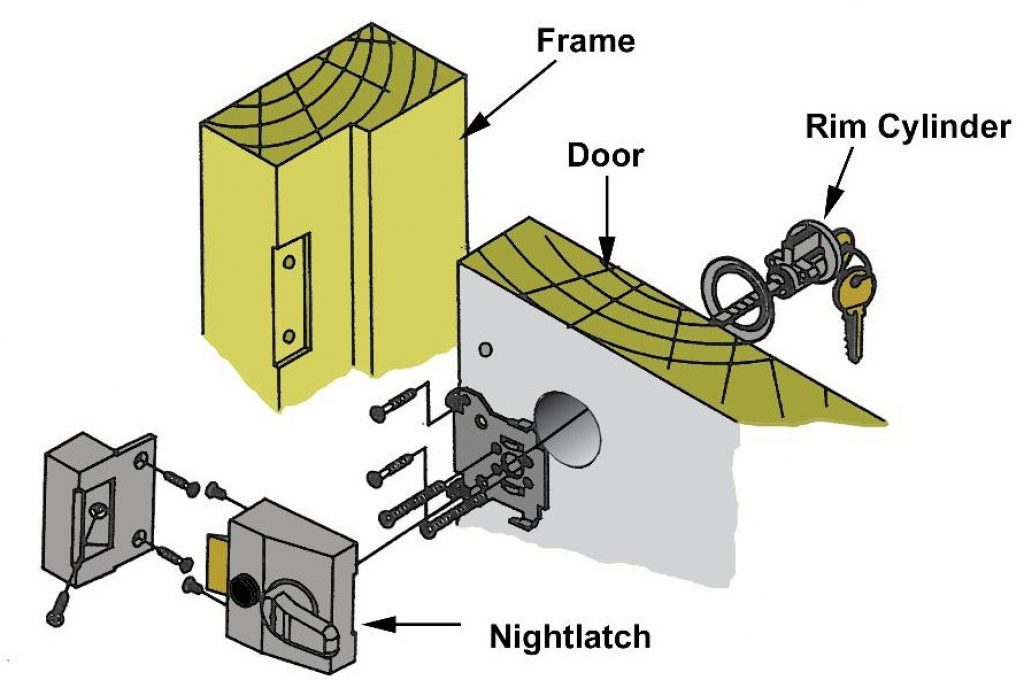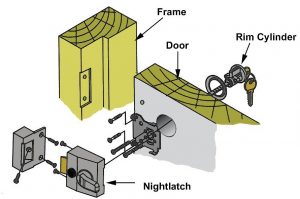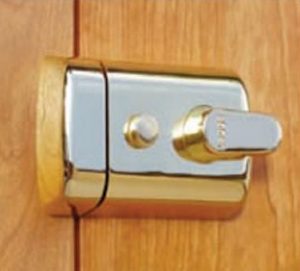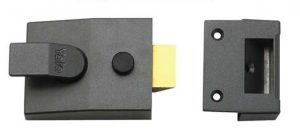What is a Night Latch?

Nightlatches have been a commonly used mechanism in order to provide extra security to domestic and commercial properties. However, are night latches the best security mechanism you can use?
In this Wonkee Donkee night latch guide, we will explain what is a night latch, how night latches work and what alternatives there are to night latches.
What is a Night Latch?
It is very likely that you have seen and used a night latch in your lifetime. They have been a very popular choice in order to secure the front doors of properties for decades. You may, however, not think of a night latch when you look at the images in this night latch guide as you may be more familiar with their other name Yale Locks.
Night latches are easily recognizable as they are simply mounted upon the inner side of doors and when these doors are closed the latch catches in the door frame of the strike plate and locks automatically. This action can be counteracted by twisting the night latch or sliding the bolt-on some locks which prevent the door mechanism from automatically locking when it catches. This is where the widely used phrase ‘keeping the door on the latch’ originates from.
How does a Night Latch work?

In the previous section, we touched on how the automatic locking section of a night latch works and how you can leave the door ‘on the latch’ to stop the automatic locking process. In this section, we will look at the locking mechanism as a whole and explain in more detail how a night latch works.
To begin, we will look at unlocking a night latch. In order to do this, you will need the correct key for the lock. Put the key into the lock and rotate the key in the direction away from the lock strike plate (a strike plate is the part of a lockset that sits within the door frame and where the latch slides into). The majority of night latches will use spring lock systems. This means that the latch as standard is positioned extending outwards. When the correct key is entered and turned in the lock it applies pressure and retracts the latch mechanism into the Yale lock case and the door can be opened.
As soon as you release the pressure by rotating the key back or removing the key, the lock will simply return to its extended state. Most commonly, night latches will be used in conjunction with door handles or doorknobs which means that you will need to simultaneously apply pressure to both at the same time in order to gain access to the property. Due to the natural extended position of the lock, night latches will automatically lock as you close the door as they will slide into the strike plate. To unlock a night latch from inside a property, you will not require a key but you will need to twist the latch or bolt in the direction away from the strike plate. This repeats the same mechanical action as when you open the lock using a key, you just simply do not need a key in order to do so.
As we also previously mentioned, you can prevent the automatic locking system by pinning the spring back and preventing the extension of the lock. This is typically done by a sliding bolt that holds the tension on the spring. There are also other versions of night latches such as deadlock night latches which require a key to be opened from both sides of the door which we explain further down in this night latch guide.
How secure is a Night Latch?

Although night latches have been widely used to secure properties for decades they are no longer viewed as one of the most secure locks available on the market. This is due to innovation in lock mechanisms making much more secure options available on the market and the evolution of criminals trying to enter properties.
The main reasoning for night latches being weak when it comes to security is due to how night latch mechanisms being mounted on doors as opposed to sitting within them. Intruders trying to access the property only need to demount the night latch as opposed to unlock the mechanism.

As you would expect, there are high-security night latches available on the market and these are called deadlocks. The difference between a deadlock night latch and a standard model is that a deadlock night latch requires a key to be used in order to unlock the door from both sides. The extra security provided by this mechanism makes it meet the British Standard 3261 for external property locks which is regularly required by insurance companies.
Taking it all into account, standard night latches can provide a level of security if you wish for privacy for a certain area of your property. At Wonkee Donkee, our advice would be to only use night latches for external entrances to properties if they adhere to British Standard 3261 or if they are used in conjunction with another, locking system.
How to install a Night Latch?

When it comes to installing a night latch it is very important to take your time and ensure that measurements are correct. As we always say at Wonkee Donkee, measure twice, cut once.
The first thing you will need to figure out when installing a night latch is the backset of the mechanism. The backset is a measurement from the center of the keyhole to the edge of the door on which you are mounting the night latch. Most typically night latches will have a backset of 60mm, however, you can find mechanisms with 40mm if that is more suitable for your door size.
As you may have guessed the night latch backset is important as you must position the keyhole of the lock mechanism at exactly 60mm (or 40mm) from the door edge for it to work most effectively. Most new night latch sets will come with a template that you can place onto the door in order to get these measurements accurately. This can be used to line up exactly where you wish to install the night latch and make the necessary marks in order to install the screws later. Once you have accurately measured and marked the door in preparation for installation, simply place the barrel of the lock through the door and attach the casing on either side using screws.






